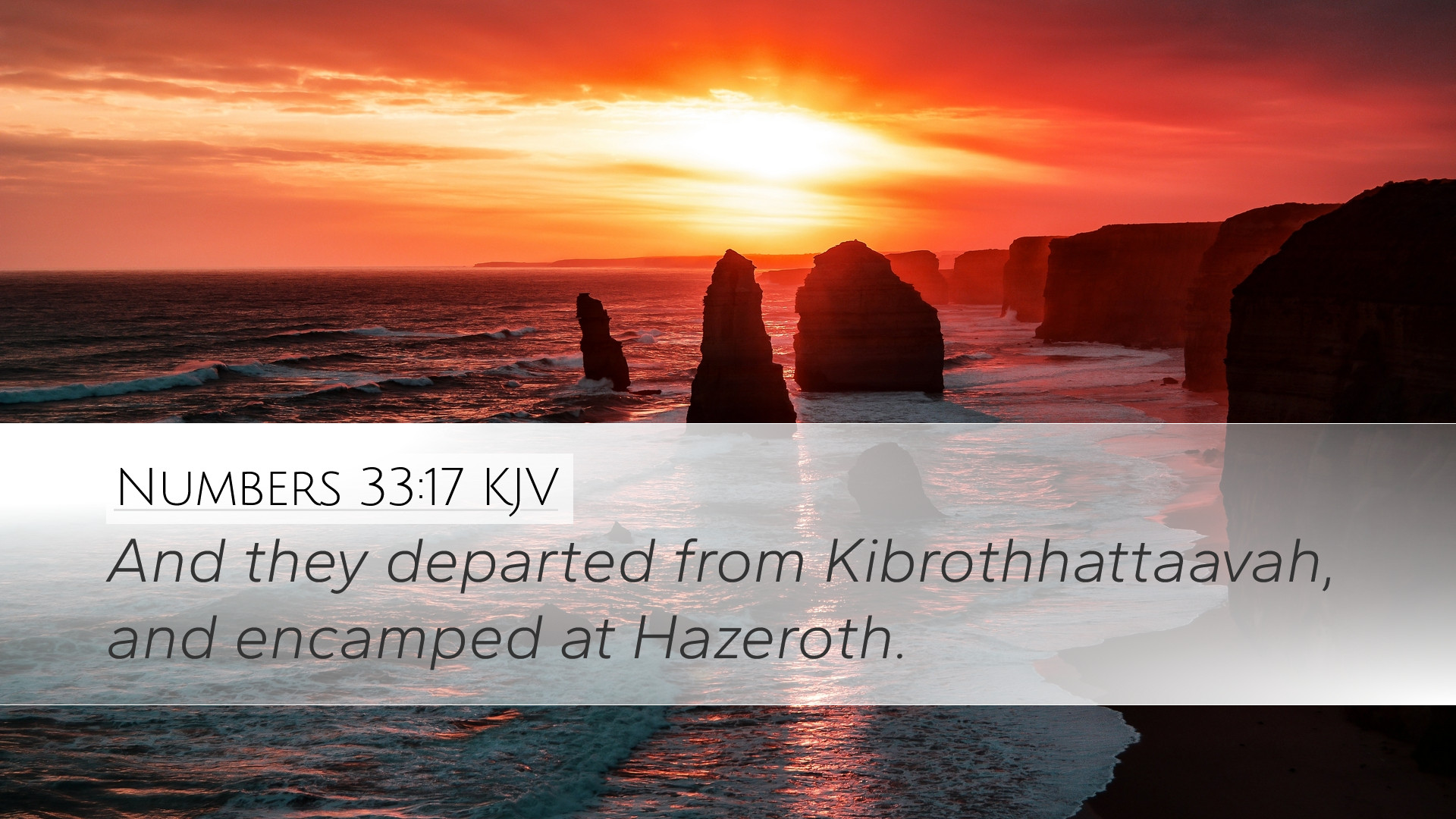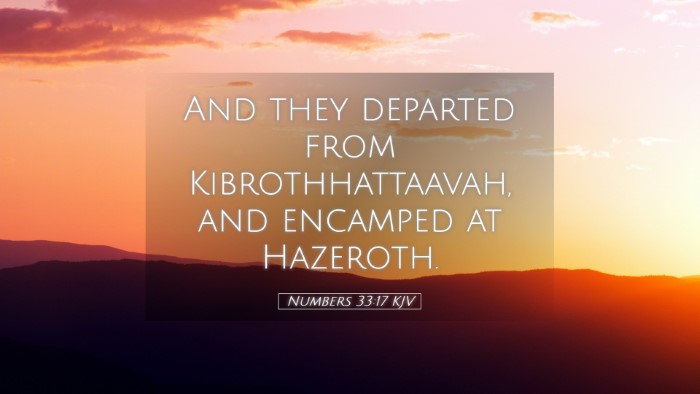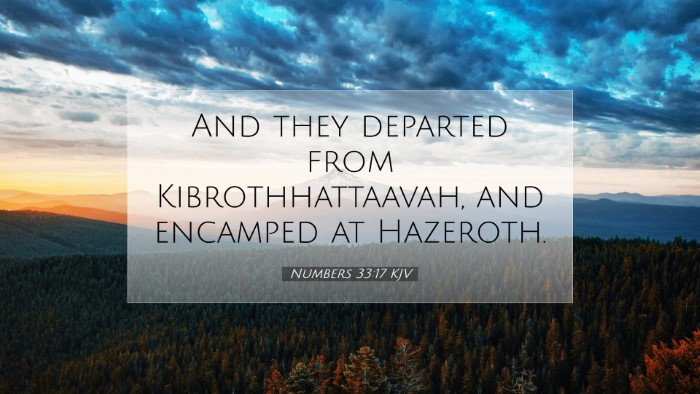Commentary on Numbers 33:17
Verse Text: "And they removed from Kadesh, and encamped in mount Hor, in the edge of the land of Edom."
Introduction
The journey of the Israelites through the wilderness encapsulates a profound period marked by divine guidance, leadership, and the myriad of lessons intended for both the Israelites and subsequent generations of believers. Numbers 33:17 presents a transitional moment in their exodus journey, demonstrating both physical movement and spiritual implications.
Overview of the Journey
The verse references a significant transition in the wilderness wanderings of the Israelites, as they move from Kadesh to Mount Hor. Each geographic location has historical and spiritual significance, contributing to the broader narrative of God’s leading of His people.
Kadesh
Kadesh was notable as a station of rebellion and consequence for Israel. It was here that the spies reported and sowed distrust about entering the Promised Land, leading to disobedience and a subsequent judgment of wandering (Numbers 14:1-4). This background serves as a poignant reminder of the cost of unbelief and the weight of spiritual responsibility.
Mount Hor
Mount Hor, identified with various locations but traditionally associated with the mountain range in Edom, becomes the next significant waypoint. This mountainous destination is intimately linked to the death of Aaron, the high priest, reinforcing themes of leadership, mortality, and divine sovereignty over human affairs (Numbers 20:22-29).
Theological Insights
- The Leadership of God: The journey from Kadesh to Mount Hor symbolizes the continuous leading of God even through difficult transitions. God’s guidance remained even in the midst of human failure and rebellion.
- The Importance of Community: Israel’s movements illustrate communal identity and shared fate. The community marched together not just in physical terms, but also in spiritual covenant and responsibility.
- Judgment and Mercy: While Kadesh represents a judgment for lack of faith, the journey onward also embodies God’s mercy and opportunity for growth. The movement signifies a chance for the next generation to learn from their forebears' mistakes.
Commentary from Public Domain Scholars
Matthew Henry’s Commentary
According to Matthew Henry, this verse emphasizes the continuation of the Israelites' pilgrimage. He points out that the move from Kadesh to Mount Hor signifies more than a mere geographical shift; it represents a movement from disobedience to a point of divine preparation—specifically for the transition of leadership following Aaron’s death. Henry highlights the imperative to recognize transitions in faith as moments of divine providence.
Albert Barnes’ Notes on the Bible
Albert Barnes elaborates on the significance of Mount Hor as part of God's unfolding plan for Israel. He contrasts the faithful leadership of Aaron, who would soon pass, with the uncertain future for the Israelites. The mountain’s elevation symbolizes both the summit of Aaron’s life and the ascension into a new phase for God's people—one that would eventually lead them closer to the fulfillment of God’s promises.
Adam Clarke’s Commentary
Adam Clarke emphasizes the symbolic importance of geographical locations in Scripture. He notes that Kadesh serves as a site of judgment, reinforcing the consequences of disobedience, while Mount Hor represents a setting for renewal and the continuation of God’s covenant with Israel. Clarke adds that this journey invites reflection on God's commitment to guide His people, even during the intersections of mortality and transition.
Practical Applications
- Learning from History: Understanding Kadesh’s failure and Mount Hor’s potential allows pastors and scholars to discern lessons from the past that can inform present-day faith and leadership.
- Commitment to God’s Guidance: Believers are encouraged to rely on God’s leading through transitions, trusting that He prepares the way, even amidst uncertainty and change.
- Community and Leadership: The journey reflects the importance of effective leadership and the communal aspect of faith. Pastors are reminded of their roles in guiding their congregations through spiritual and communal journeys.
Conclusion
The movement from Kadesh to Mount Hor in Numbers 33:17 is laden with theological weight and practical implications. It teaches about the steadfastness of God’s guidance, the weight of communal identity in faith, and the essential nature of learning from the past. As pastors, students, and theologians reflect on this passage, they are encouraged to see God's hand at work in transitions, helping to navigate the wilderness of life with trust and faithfulness.


